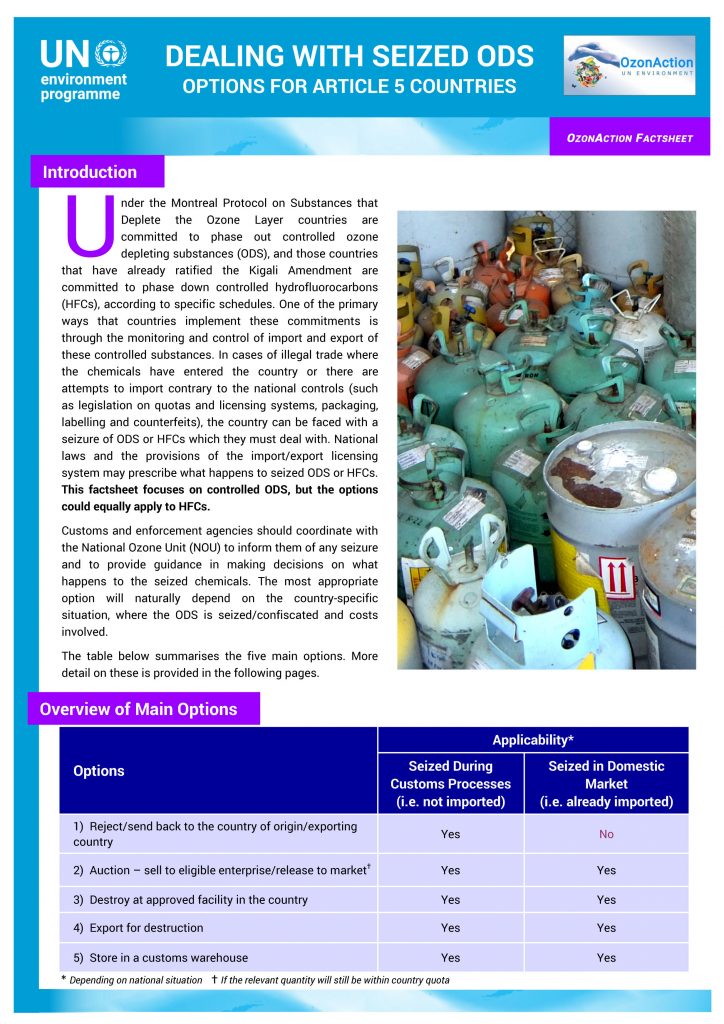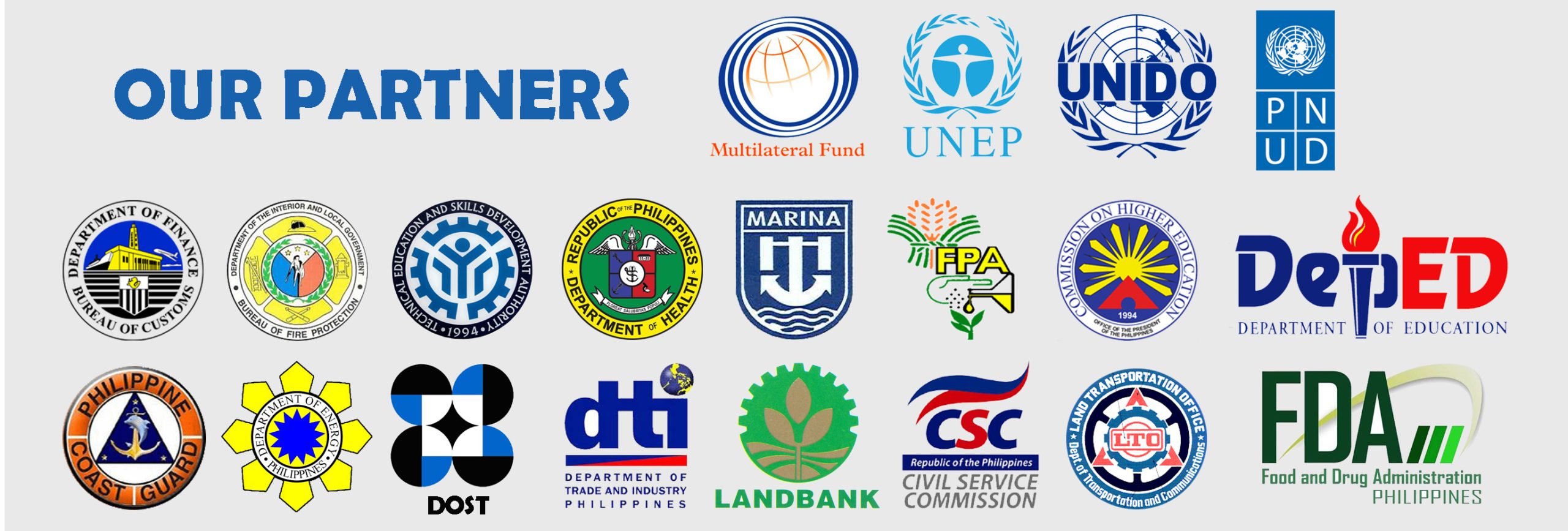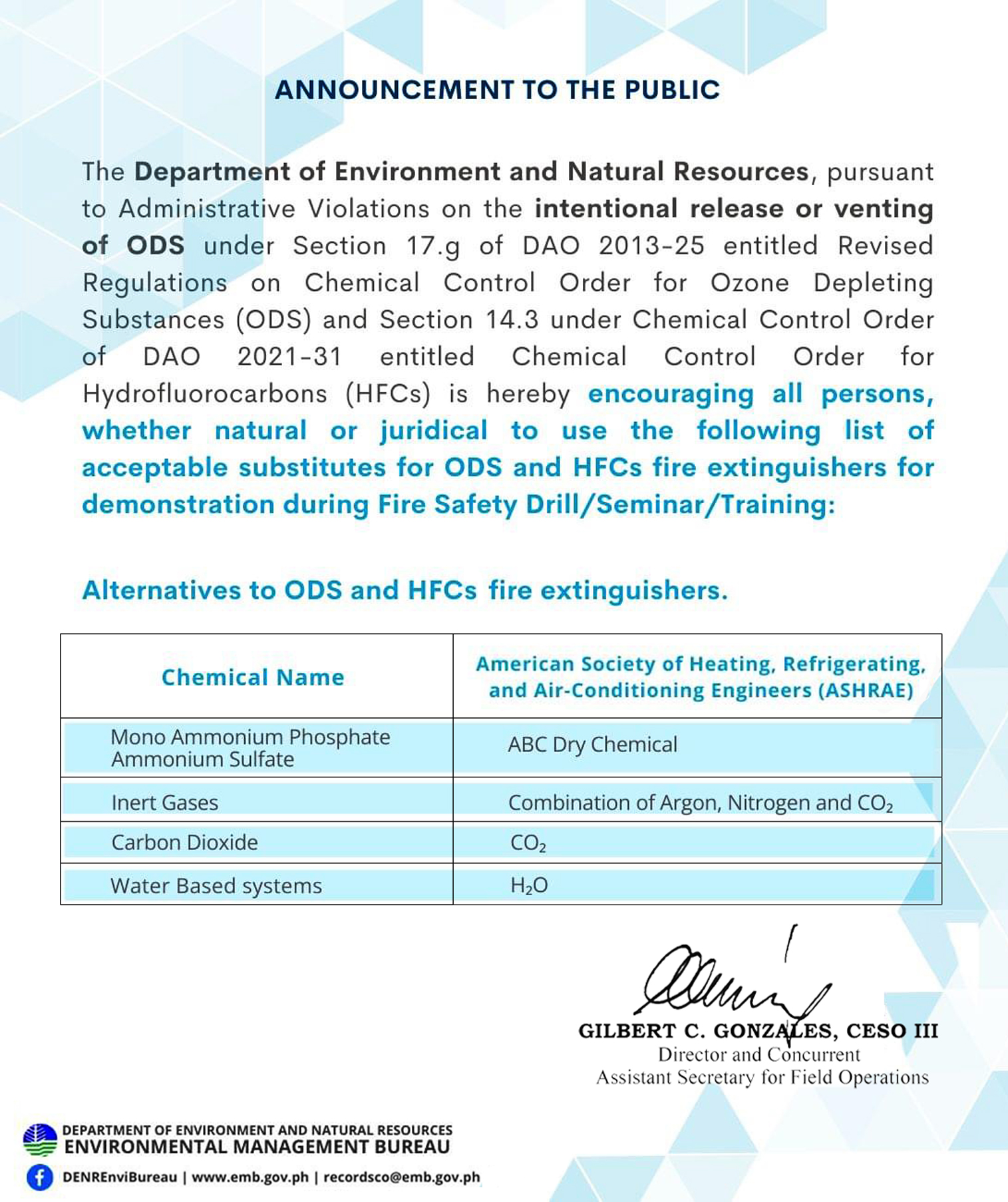Under the Montreal Protocol on Substances that Deplete the Ozone Layer countries are committed to phase out controlled ozone depleting substances (ODS), and those countries that have already ratified the Kigali Amendment arecommitted to phase down controlled hydrofluorocarbons (HFCs), according to specific schedules. One of the primary ways that countries implement these commitments is through the monitoring and control of import and export of these controlled substances. In cases of illegal trade where the chemicals have entered the country or there areattempts to import contrary to the national controls (such as legislation on quotas and licensing systems, packaging, labelling and counterfeits), the country can be faced with a seizure of ODS or HFCs which they must deal with. National laws and the provisions of the import/export licensing system may prescribe what happens to seized ODS or HFCs. This factsheet focuses on controlled ODS, but the options could equally apply to HFCs.Customs and enforcement agencies should coordinate with the National Ozone Unit (NOU) to inform them of any seizure and to provide guidance in making decisions on whathappens to the seized chemicals. The most appropriate option will naturally depend on the country-specific situation, where the ODS is seized/confiscated and costs involved. The table below summarises the five main options. More detail on these is provided in the following pages.

One of the primary ways that countries implement their commitments under the Montreal Protocol and particularly the Kigali Amendment is through the monitoring and control of import and export of controlled substances. This fact sheet provides various options for Article 5 countries on how to deal with seized refrigerants in cases of illegal trade.
Source: https://www.unenvironment.org/ozonaction/resources/factsheet/dealing-seized-ods-options-article-5-countries



